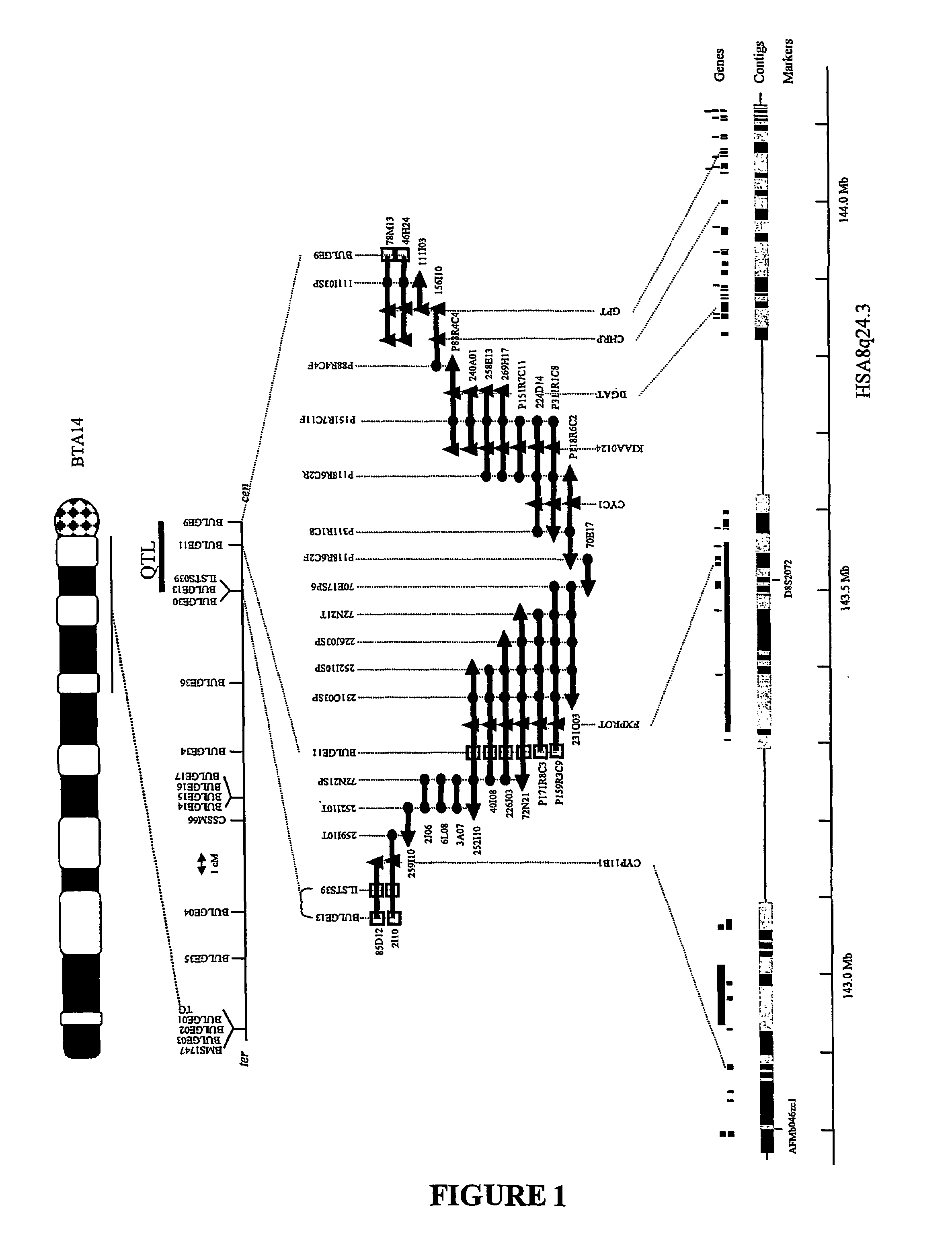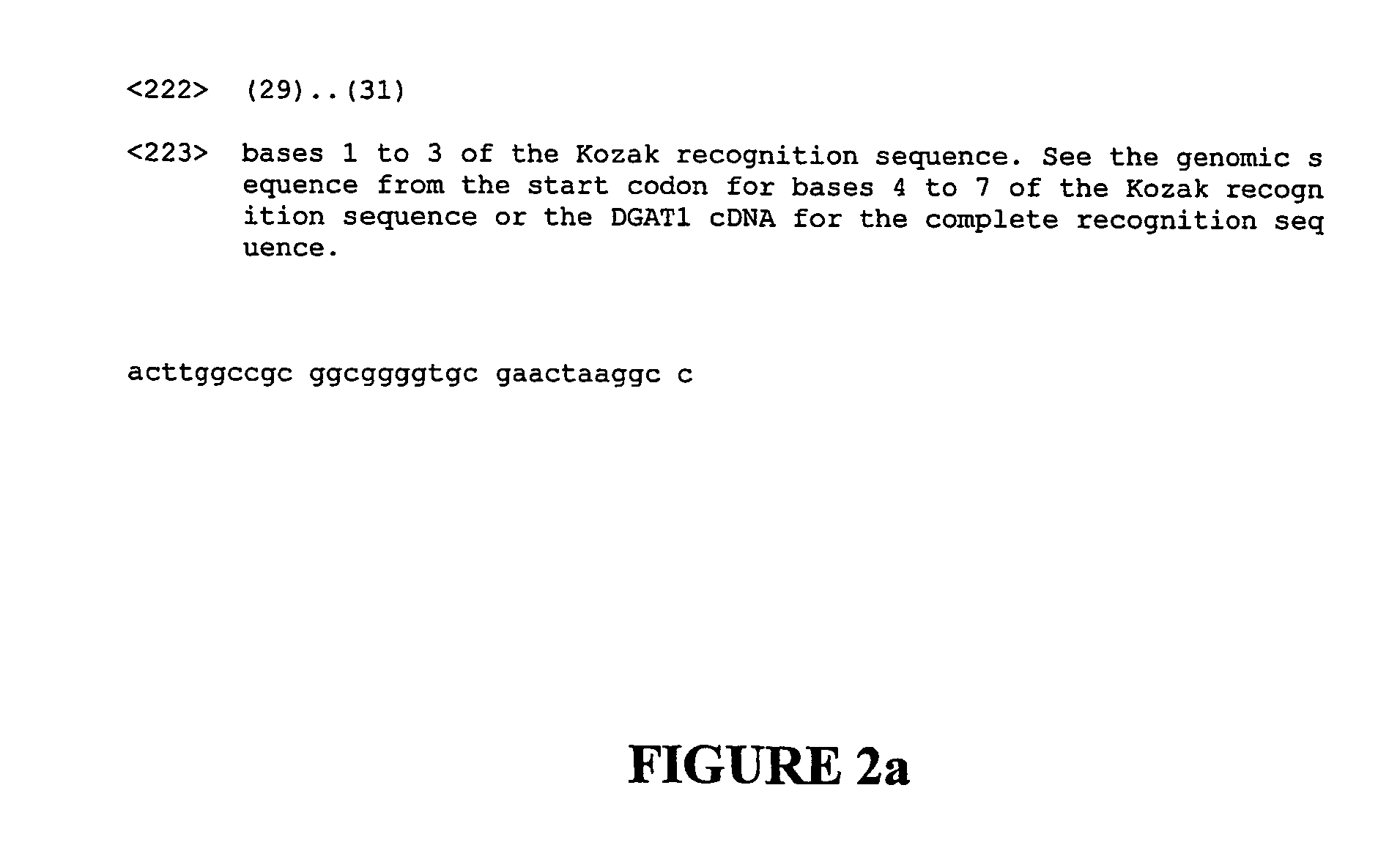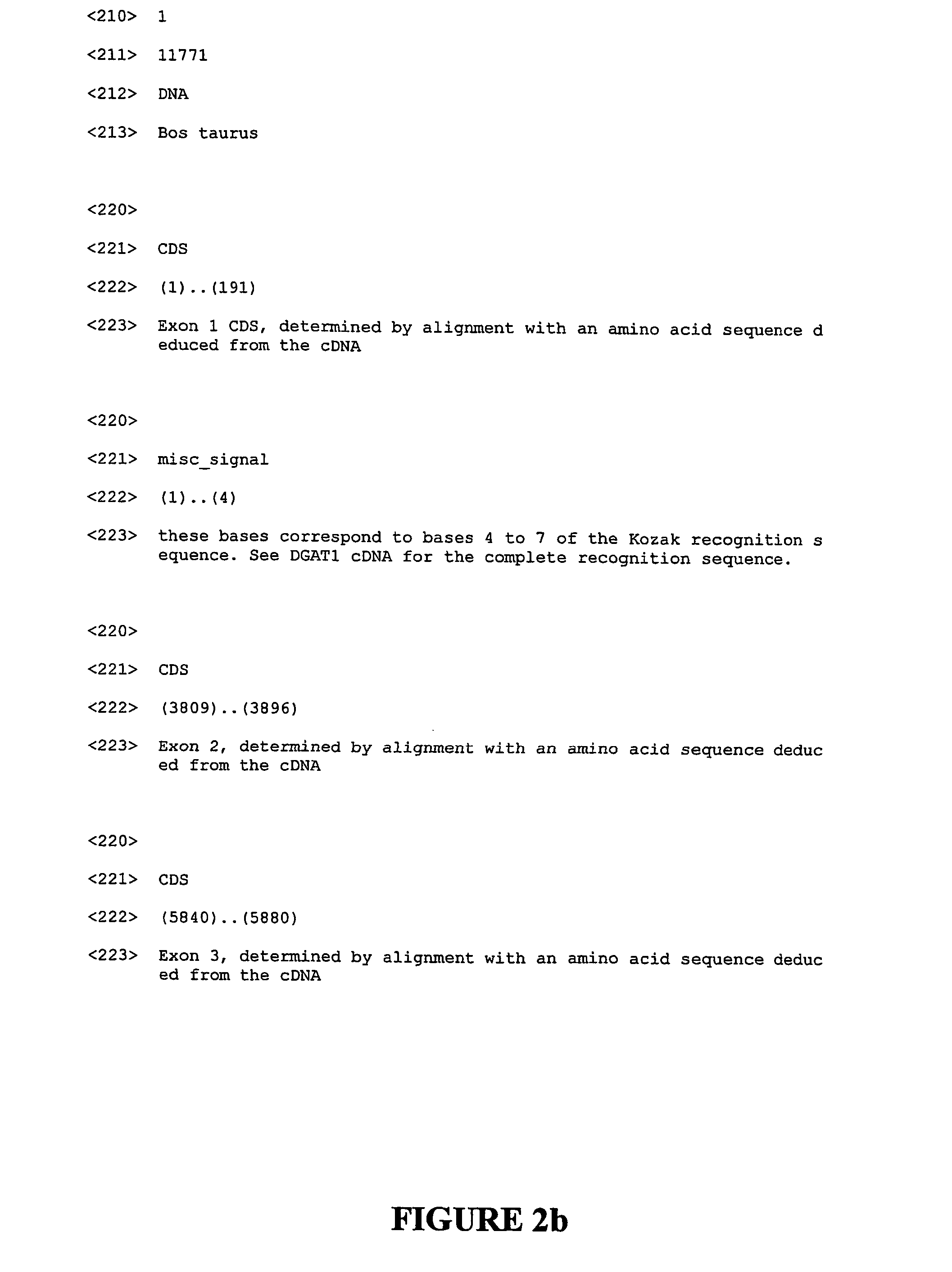Marker assisted selection of bovine for improved milk production using diacylglycerol acyltransferase gene DGAT1
a technology of diacylglycerol and acyltransferase, which is applied in the direction of transferases, viruses/bacteriophages, enzymology, etc., can solve the problems of little knowledge regarding the genes and the poor understanding of the genome of bovines, and achieve the effect of improving milk yield and altering milk composition
- Summary
- Abstract
- Description
- Claims
- Application Information
AI Technical Summary
Benefits of technology
Problems solved by technology
Method used
Image
Examples
Embodiment Construction
[0023]It has been discovered for the first time that the DGAT1 gene in bovine is associated with the QTL on chromosome 14 which is linked with improved milk production traits. More particularly, a number of novel polymorphisms on the DGAT1 gene have been discovered. It is thought that one or more of these polymorphisms is responsible for these traits.
[0024]The method used for isolating genes which cause specific phenotypes is known as positional candidate cloning. It involves: (i) the chromosomal localisation of the gene which causes the specific phenotype using genetic markers in a linkage analysis; and (ii) the identification of the gene which causes the specific phenotype amongst the “candidate” genes known to be located in the corresponding region. Most of the time these candidate genes are selected from available mapping information in humans and mice.
[0025]The tools required to perform the initial localisation (step (i) above) are microsatellite marker maps, which are availabl...
PUM
| Property | Measurement | Unit |
|---|---|---|
| Temperature | aaaaa | aaaaa |
| Temperature | aaaaa | aaaaa |
| Temperature | aaaaa | aaaaa |
Abstract
Description
Claims
Application Information
 Login to View More
Login to View More - R&D
- Intellectual Property
- Life Sciences
- Materials
- Tech Scout
- Unparalleled Data Quality
- Higher Quality Content
- 60% Fewer Hallucinations
Browse by: Latest US Patents, China's latest patents, Technical Efficacy Thesaurus, Application Domain, Technology Topic, Popular Technical Reports.
© 2025 PatSnap. All rights reserved.Legal|Privacy policy|Modern Slavery Act Transparency Statement|Sitemap|About US| Contact US: help@patsnap.com



